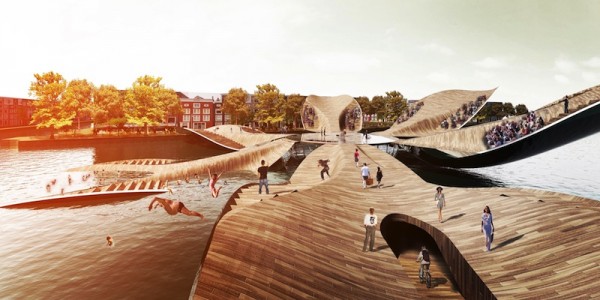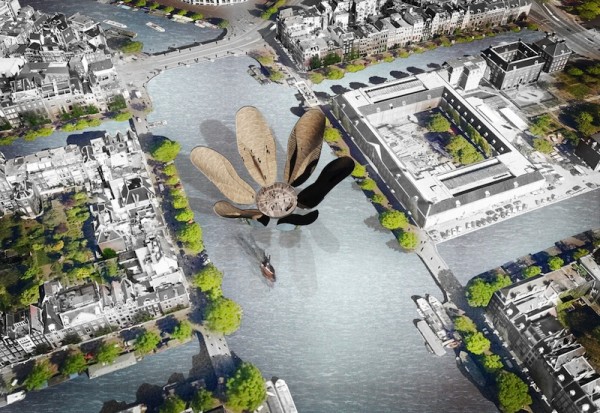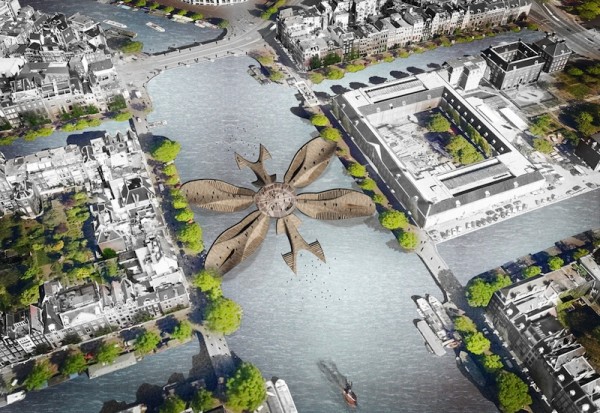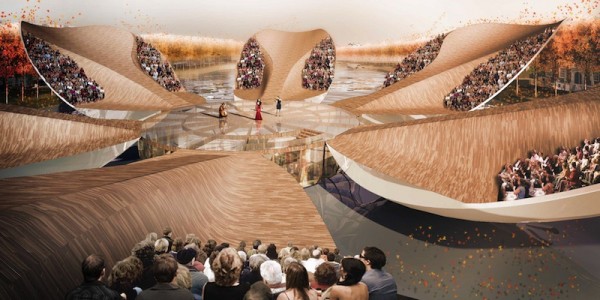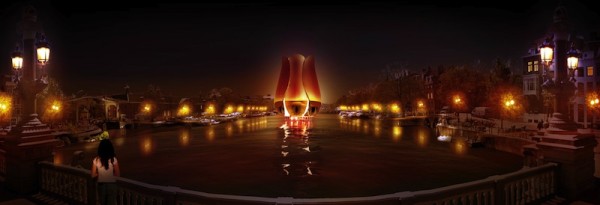In a city that seems in a constant quest for space to host different activities it would be a pity to miss the wonderful opportunity to create a multifunctional bridge. Depending on the time of day, the tulip blossoms unfolds its petals in different positions.
In the Plaza scenario all the petals are flat out; thus the beauty of natural form would accommodate the maximum pedestrian flow and optimize the connectivity between the banks. The very heart of the tulip, which becomes crescendo of pedestrian flows, is the best place to stop and enjoy the surroundings in the middle of the river channel, to feel the genuine atmosphere of the country.
Dutch culture rests on water. Canals are used for skating in winter and for enjoying shade and swimming in summer. Two main petals that gradually end up in steps join together forming a deck that allows swimmers to get closer to the water. The bridge becomes a sophisticated beach deck, suitable for sunbathing, among other things.
Culture in all its marvelous forms is an indispensable part of our lives, but there is no denying that philharmonic orchestra has become a recognizable embodiment of its essence. By a slight raising of the petals the tulip acquires optimal shape of a stepped amphitheater that would host free concerts to a public audience.
With all the petals raised except for the one facing the Hermitage Museum, the bridge can be used as additional exhibition space. Such “art in the street” concept will engage people passing by in Flemish art and will give the art a new kick-start worldwide. Art may as well become more enjoyable outdoors than in the walls of the museum.
With all the petals raised the closed tulip reveals itself in its full magnificence. The Club can become a space to host different activities both during the day and at night. In addition, it can become a meeting point for all the music boats during the celebration of the Queen’s day.
By changing its color at night the Tulip disguises itself in the form of a city lantern contributing to creation of special atmosphere of Amsterdam. Each color may mark a certain event. Thus the Tulip can change its color into orange for Queen’s Day, it may be red for Valentine’s Day, etc. Natural colors of the tulip reflect the unique atmosphere of the city. The Tulip truly captures the essence of a living “city icon.”

